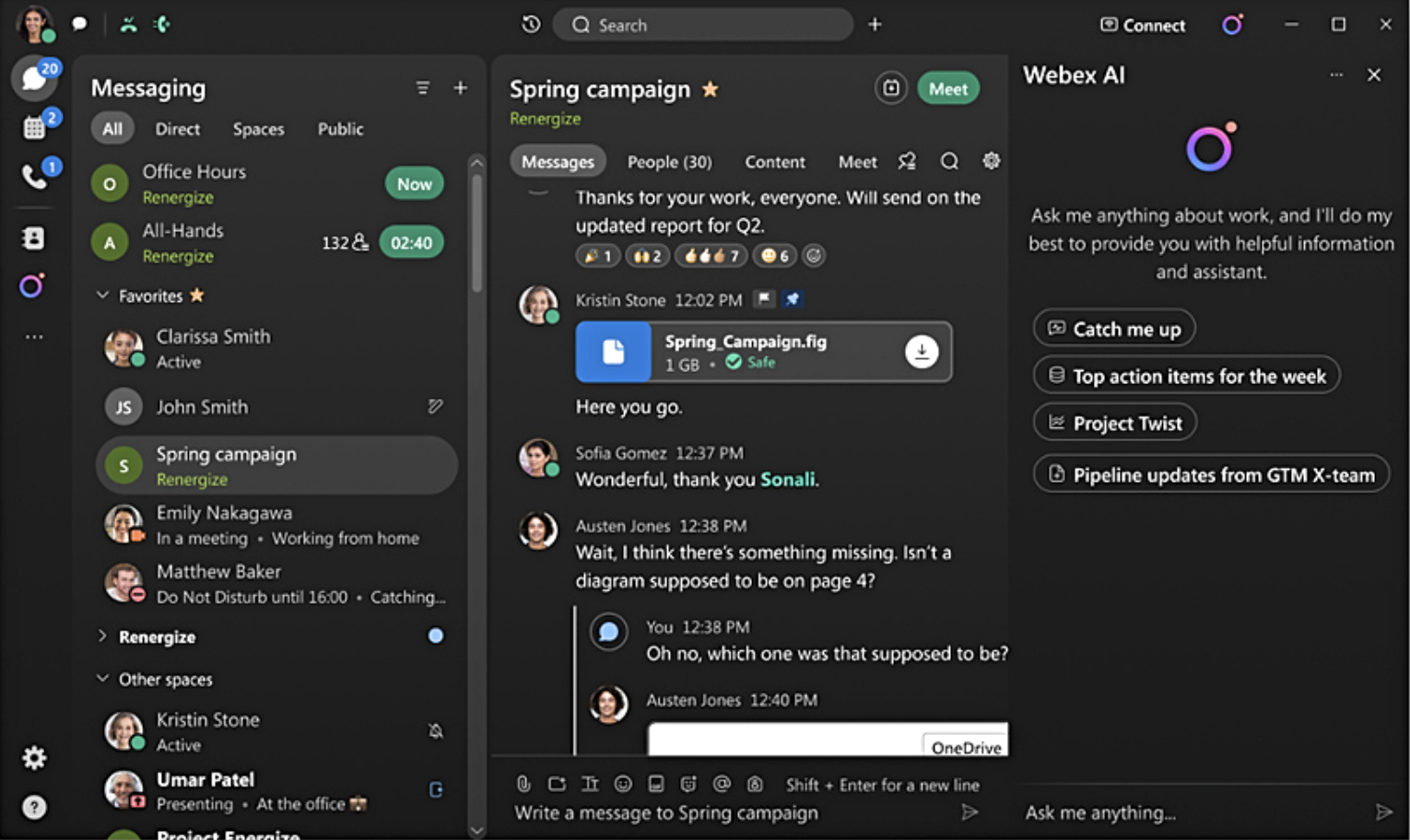2023 presented plenty of opportunities for vendors in the world of team collaboration. Cisco's Webex, Asana, and Microsoft Teams all added more artificial intelligence features to their platforms, while Slack introduced a new, more unified design.
There was less movement in the workforce in 2023, according to the Bureau of Labor Statistics, which reported a decrease in both the number of hires and total separations. After the great resignation movement in 2022, it seems that more workers are settling in to permanent job situations and team collaboration will be a key to building bonds between colleagues.
In 2023, team collaboration providers were more focused than ever on leveraging AI and machine learning to increase productivity across industries.
Great Resignation Presented Greater Case for Robust Collaboration
In a late 2022 report looking ahead to 2023 - Asana noted that employees continue to adjust to office returns and new work arrangements. According to Asana: most (or 52%) of employees; decide if they will stay at their job depending on how much flexibility it offers.
Of course, there are various other underlying factors - including the 40% of workers who said they consider leaving their job within three to six months. These folks - cite an overall lack of social support as one reason - according to the aforementioned Asana report.
"Not only that but quitting seems contagious," it wrote, as a recent study found that resignations are not something that occurs "in isolation."
But rather, they occur as team events - typically within teams of six to ten members. And a Visier report found that workers are 15% more likely to leave after a colleague resigns. One very plausible solution - ensuring these folks have the tools they need to perform their job with little to no hiccups.
Of course, workplace happiness and other factors play a role: but some UCC tools can track all of that, including employee productivity and well-being - in real-time and can extend insights to that management so they can take the appropriate action for corrective purposes.
Enter collaboration tools - which extend many of these advanced functionalities.
Collaboration Platform; Continued Innovation
As such - many collaboration tool vendors that overhauled their platforms in 2022 - looking to re-captivate folks who reside in that quitter's market - continued to innovate in 2023.
In November 2023, Zoom introduced a number of new whiteboard features for both admins and users including a new control to manage temporary sharing specifically within meetings, resulting in increased security as external users will now follow the intended sharing restrictions set by the board owner's admin.

In 2023, Cisco added generative AI across the Webex platform with a new AI Assistant that combines Large Language Models and Real-time Media Models data to recognize non-verbal cues like body language and facial gestures.
Cisco also released further improvements and updates to its recently overhauled WebEx meetings platform, including a new in-app scheduler, a floating chat box to use while screen sharing, and picture-in-picture video.
Asana leveraged AI in 2023 to make creating workflows simpler and more intuitive. Asana users can now automate workflows by adding conditions to rules and branching. The branching option allows rules to run in different scenarios with different actions. Users can also create rules to automatically set a task's title and description.

Microsoft Teams launched Copilot for Teams in 2023. Copilot is a conversational AI chatbot that can be used to summarize meetings, list key discussion points, and suggest action items in real time. Teams users can also interact with Copilot as they would ChatGPT and ask questions about the meeting such as "where did participants agree/disagree".
Leveraging AI More and More
Of course, no outlook would be complete without considering the impacts of artificial intelligence on technology. In this instance, we're looking at AI - which will continue to shape how folks collaborate in 2024.
It already helps in finding the most optimal time for meetings, eliminating the annoying "send me a few available times" email that gets sent out to dozens in some cases- leading to endless back-and-forths. AI can even send post-meeting follow-ups and work to ensure action items are delivered - not merely forgotten.
2024 could very well be the year vendors understand that they don't need bells and whistles, but rather; the tools needed to make work less annoying. Convenience is and has always been the name of the game in collaboration. Reducing turnover and burnout could lie in; ensuring tools are robust enough to foster only the best experiences.
Of course, it will also take the work of willing HR and management, along with others, to hire the right tech-savvy talent - or at least those willing to conquer bleeding-edge technologies. And that is what these tools are, after all - as their development continues to unfold before our eyes, sometimes with features that make you go "wow" while others are questionable at best.
In 2024, there's no room for (superfluous) collaboration tools - only the ones that help employees pull off feats previously unimaginable - at least before the pandemic.
With the consideration of working from anywhere - this task seems increasingly difficult, but the collaboration superstars will manage with grace - and little-to-no friction as they have the right teams in place and are listening to what customers/users demand.



